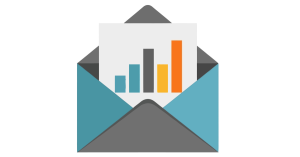Email marketing offers banks and other financial institutions a powerful marketing channel to engage with clients, provide valuable insights, and promote financial products and services. In many respects, email marketing for a bank is just like email marketing for any other retail business. Despite this, many marketers believe that email marketing can be challenging or even risky in an industry where trust and security are crucial. However, the benefits of email marketing, when done right, far outweigh the risks, making it a strategy worth considering for banks.
In this post, we’ll explore the opportunities email marketing presents in the banking industry, highlight some of the areas banks have to tread carefully and share some best practices marketers can exploit.
Why Should Banks Consider Email Marketing?
Just in case you didn’t get the memo and need a compelling reminder why a bank should consider email marketing as part of its cohesive digital marketing strategy, here are ten reasons that should not just raise but ignite your interest:
- Cost-Effective Communication: Email marketing is a highly cost-effective way to reach a large audience compared to traditional marketing methods such as print ads or TV commercials. With relatively low costs, banks can achieve significant reach and engagement.
- Personalization and Targeting: Email marketing allows marketers to create highly personalized messages. Banks can send tailored messages that address individual preferences, behaviors, and financial needs by leveraging customer data. This customized approach enhances customer satisfaction and loyalty.
- Customer Engagement: Regular email communication helps keep customers informed and engaged. Banks can maintain a strong connection with their customers by providing relevant content about their products and services.
- Cross-Selling and Upselling Opportunities: Email marketing is an effective tool for cross-selling and upselling. Banks can promote additional products and services, such as credit cards, loans, or investment accounts, to customers who are most likely to benefit from them based on their previous interactions and behaviors.
- Timely and Relevant Information: Email marketing enables banks to deliver timely and relevant information directly to their customers. Email ensures customers receive important news promptly, whether it’s a change in interest rates, new branch openings, or critical security updates.
- Measurable Results: Email marketing gives marketers measurable results through metrics like open rates, click-through rates, and conversion rates. These insights help banks understand the effectiveness of their campaigns and make data-driven decisions to optimize future communications.
- Building Trust and Credibility: Sharing valuable content such as financial advice, success stories, and security tips can build credibility and trust.
- Customer Retention: Regular, meaningful email communication can increase customer loyalty by keeping them engaged and informed about the bank’s offerings and benefits.
- Automation and Efficiency: Modern email marketing platforms offer marketing automation features that streamline the process of sending targeted emails. Automation ensures that customers receive relevant messages at the right time, improving efficiency and engagement.
- Strengthening Brand Awareness: Branded emails that reflect the bank’s values and mission can enhance brand recognition and customer loyalty. This is essential in the increasingly competitive banking industry.
Are There Any Downsides?
Banking is a serious business, so any marketer employed in the sector should be aware of the potential risks. Being forewarned is being forearmed; therefore, it would be remiss not to mention the following:
Potential Security Breaches
Banks deal with sensitive customer information, and email communications can be a target for cyber-attacks. If emails are not properly secured, there is a risk of data breaches, phishing attacks, and identity theft, which can damage the bank’s reputation and lead to legal consequences.
Compliance and Regulatory Challenges
Email marketing in the financial sector is heavily regulated. Banks must comply with laws such as GDPR, CAN-SPAM, and other industry-specific regulations. Non-compliance can result in hefty fines and legal issues. Therefore, it is essential for banks to stay updated on regulatory requirements and ensure all communications adhere to these standards.
Trust the experts
The good news is that reputable digital marketing agencies like emfluence are experts in managing these risks and ensuring that banking clients don’t fall foul of the regulators.
10 Email Marketing Tips for Banks
Now we know why email marketing is such a powerful asset for banks and financial institutions, it’s time to consider some best practices. Here are ten email marketing tips specifically tailored for the banking industry:
- Personalize your marketing content: Use customer data to personalize emails. Start by addressing customers by their names before tailoring content based on their preferences and past interactions. For example, if a customer frequently uses your mobile app, use your emails to highlight new app features.
- Segment your audience: Divide your email list into segments based on criteria such as demographics, account types, transaction history, or engagement levels. This allows for more targeted and relevant messaging, increasing the likelihood of engagement.
- Offer valuable content: By sharing relevant financial content, you’ll position your bank as a trusted advisor and help customers make more informed financial decisions.
- Reassure your customers by highlighting the robust security measures your bank has in place. Regularly update them on how you are diligently protecting their data and share practical tips on how they can safeguard their personal information.
- Promote new products and services: Inform customers about new offerings, such as new types of accounts, credit cards, or loan products. Make sure to clearly explain the benefits and how these products can meet their needs.
- Include clear Call-to-Actions (CTAs): Ensure each email has a clear and compelling CTA, whether it’s to schedule a meeting with a financial advisor, sign up for a webinar, apply for a new product, or simply learn more about a service.
- Utilize transactional emails: Leverage your transactional emails (like statements, receipts, and alerts) to include additional marketing messages. Since these emails typically have high open rates, they provide an excellent opportunity for cross-selling or upselling.
- Optimize for mobile: Ensure your emails are optimized for mobile. Many subscribers will read emails on their smartphones before jumping onto your app to manage their banking.
- Showcase customer success stories: Share testimonials and case studies from satisfied customers to build trust and provide social proof.
- Celebrate customer milestones: Prove your customers are more than just an account number by sending personalized emails for customer birthdays, anniversaries, or other significant milestones. Be sure to include special offers or discounts to help mark the occasion.
How emfluence Can Help
Whether your bank is looking to harness the power of email to personalize your messages, ensure regulatory compliance, or boost customer engagement, the email marketing experts at emfluence will help you achieve your business goals and enhance customer satisfaction. To learn more about how we can assist your bank’s marketing team, contact us today at expert@emfluence.com.

